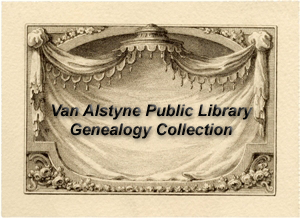 MANTUA ... where it started. It is called Mantua and it is pronounced MAN'chu-way, but it is no more. Once it was a town, the second largest in Collin County. Today, it is only a memory to some. The houses and store buildings and the church and school are all gone. The city square, where the soldiers drilled before going off to fight in the War Between the States, is weed-covered today. The town of Mantua flourished for about 25 years. In notes about the town compiled by Rea Nunallee, it is reported that the town was established in 1854, although settlers were in the area long before that. J. H. Arnspiger was living in the area as early as 1845. Among the other early pioneers were Dr. J. L. Leslie; Oscar C. Riddle, C. C. Walsh; C. C. Greer; J. A. Stinnett; the McKinneys, among whom were Collin, his son Younger Scott, D. D. L. (Uncle Doc), S. L. (Uncle Leak) and James W. McKinney; W. K. Henderson, and the families of Slaughter, Drye, Fulton, Blassingame, Cartwright, Kepler, Hawles, Thompson, Garver, Dumas and Moore. In February, 1854, Younger Scott McKinney sold off 200 acres of land, to be used as the site for a town and a college. McKinney was given the job of laying out the town. He had four streets going east and west and four going north and south. The streets were named for Texas heroes of the day: Crockett, Milam, Fannin, Bonham, Rusk, Travis and Sherman and one street was named School Street. There were two alleyways in town and Younger Scot gave them names, also. There was Throckmorton Alley on the west side and Wilcox Alley on the east. James W. Throckmorton was one of the organizers of the town and college. He had come to Texas from Arkansas in 1841, and fought in the Mexican War in 1847. In 1851, he got himself elected to the legislature and in 1856, he was elected governor of Texas. Joe Wilcox was another backer of the project, as was William C. McKinney, who was in charge of selling the lots. The money from the sales would be used to establish the college. The founders knew the type of town they wanted and wrote in
restrictions on the deeds. For instance,
no liquor could be Horation W. Walcott bought the first lot. He paid $60 for it. He hauled lumber from the port at Jefferson to build a frame, two-story building. Walcott opened his store in February, 1857. At the same time Walcott was opening his store, the Mantua Masonic Lodge was being organized. The lodge used the upstairs over Walcott's store for two years, the moved into a building of their own. From the very beginning, the lodge had plans for a school for Mantua and when the lodge moved into its building in 1859, the lodge used the downstairs of their building for a school. Mantua Seminary had been chartered on September 1, 1856, but a lack of funds had held back the opening until now, 1859. The school was taught by J. Myers and his wife. The enrollment at the school increased rapidly and within two years, some of the classes had to be moved upstairs at the lodge hall. Everyone wanted to build a school building but the Civil War was interfering but once the war was over, a two-story, sixteen-room school house was built. In 1868, the school had eight teachers and eighty pupils. The Civil War hit Mantua particularly hard. The Masonic Lodge had a membership of 45 and 36 of them entered the cavalry from Mantua. Before heading off to war, they trained on the town square. During the war, a Confederate wagon repair shop was operated in Mantua. When the War Between the States started in 1861, Mantua had a post office and at least four business stores, including a drug store opened by Dr. Leslie. The post office had been opened on June 29, 1858, with E. B. Rollins as Postmaster. There was a lot of activity going on in Mantua. There was a tan yard and a mill and the first
Christian Church (Disciples of Christ) in Texas was established in Mantua.  Mantua History Susan Hawkins © 2024 If you find any of Grayson County TXGenWeb links inoperable, please send me a message. |